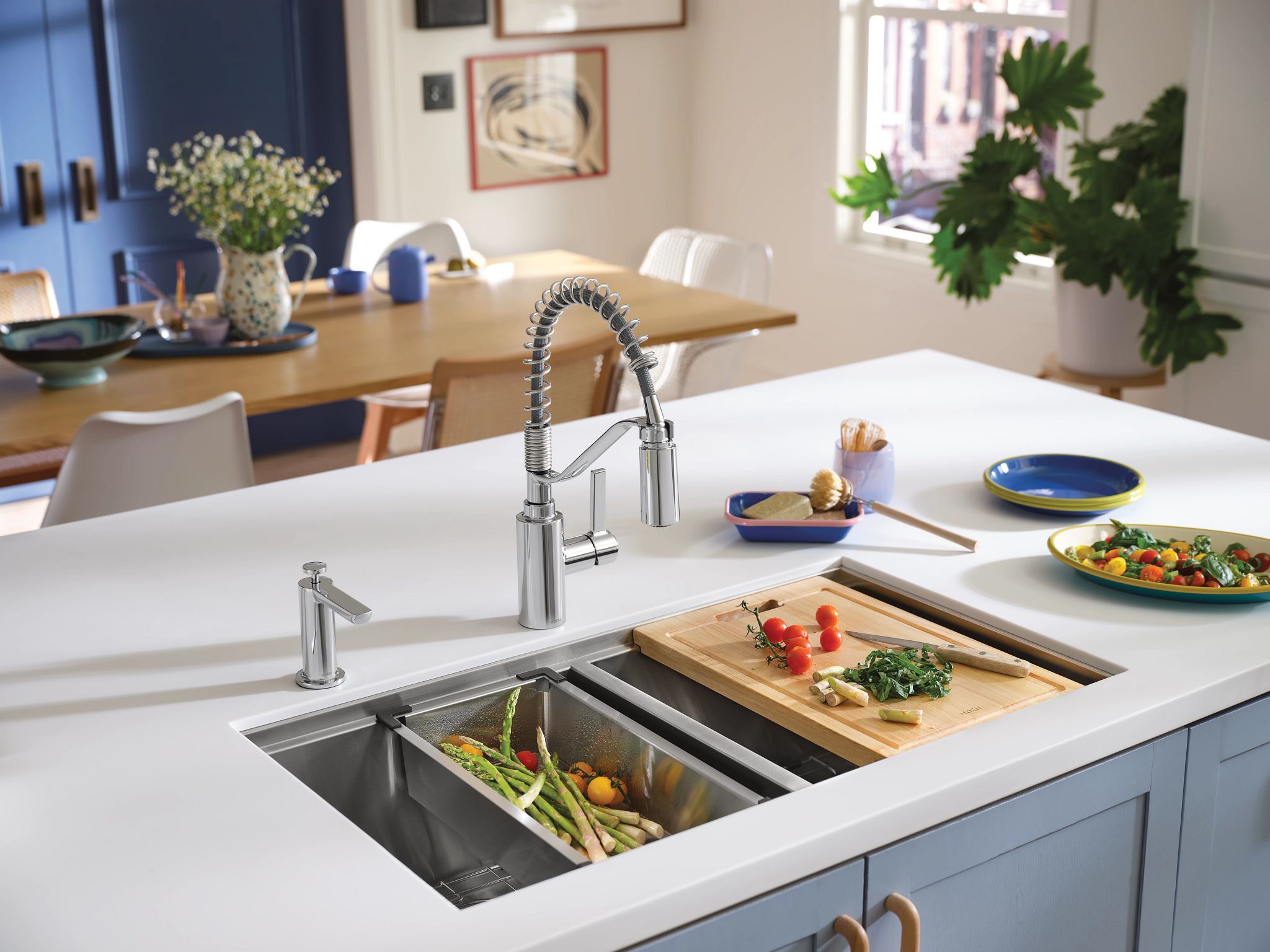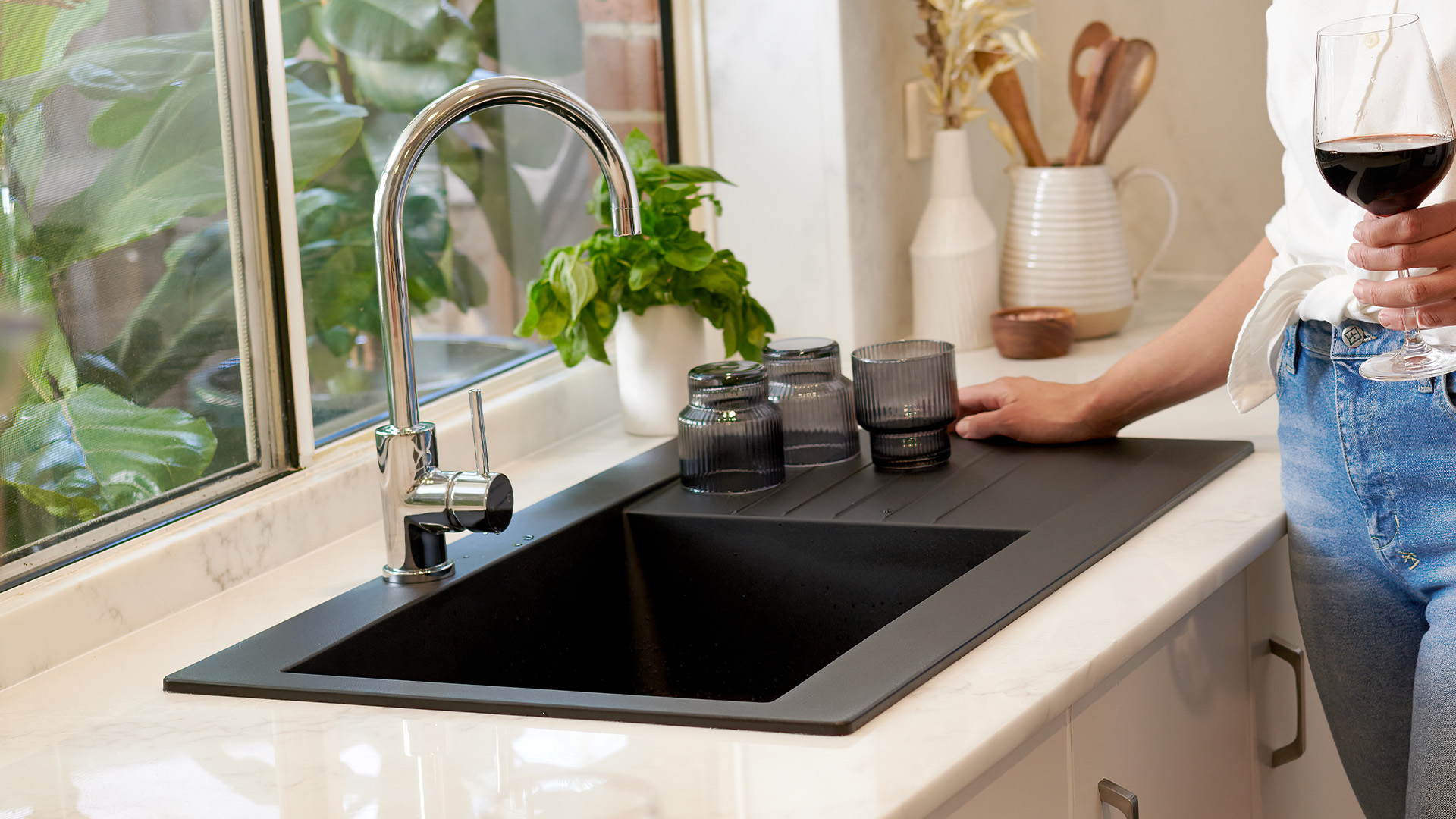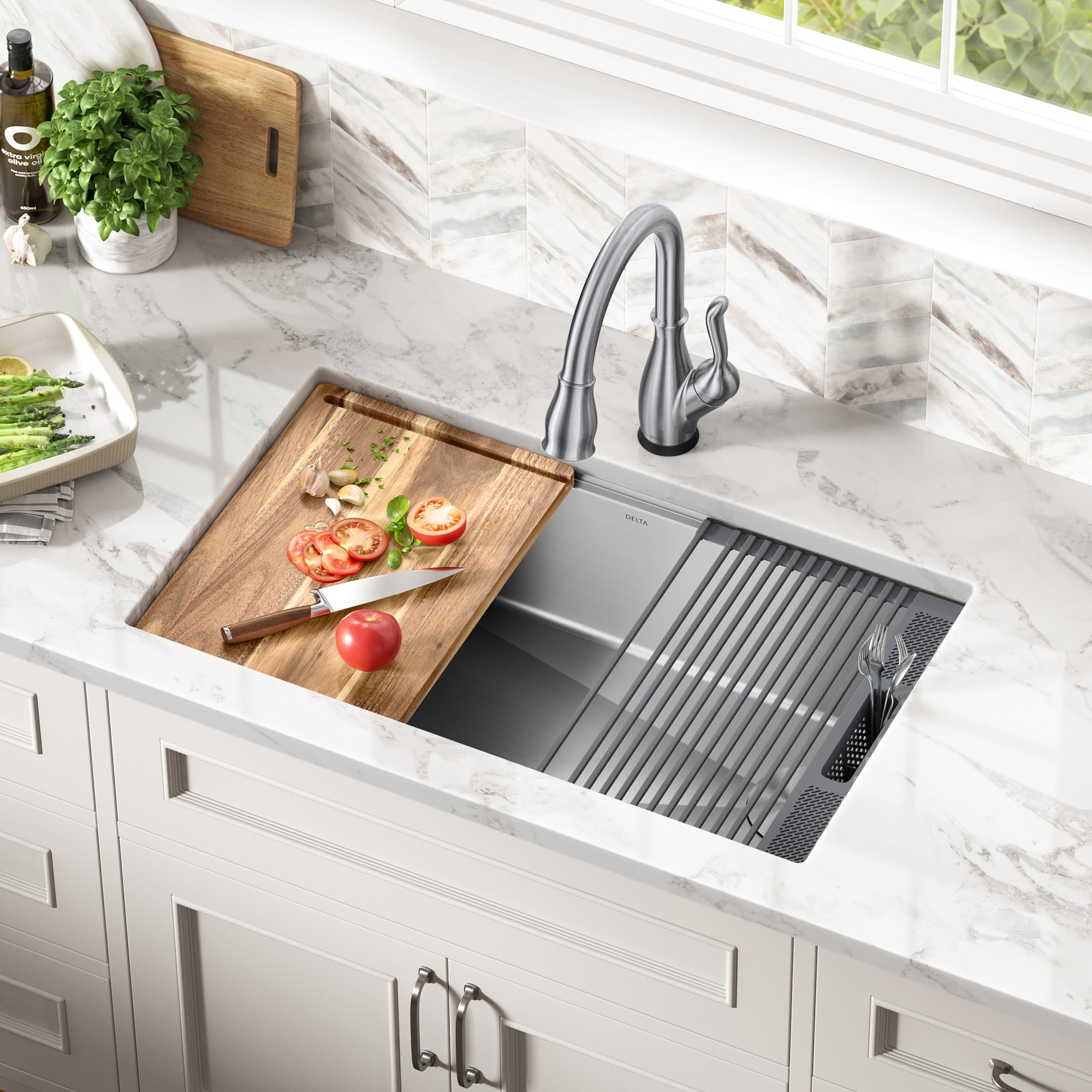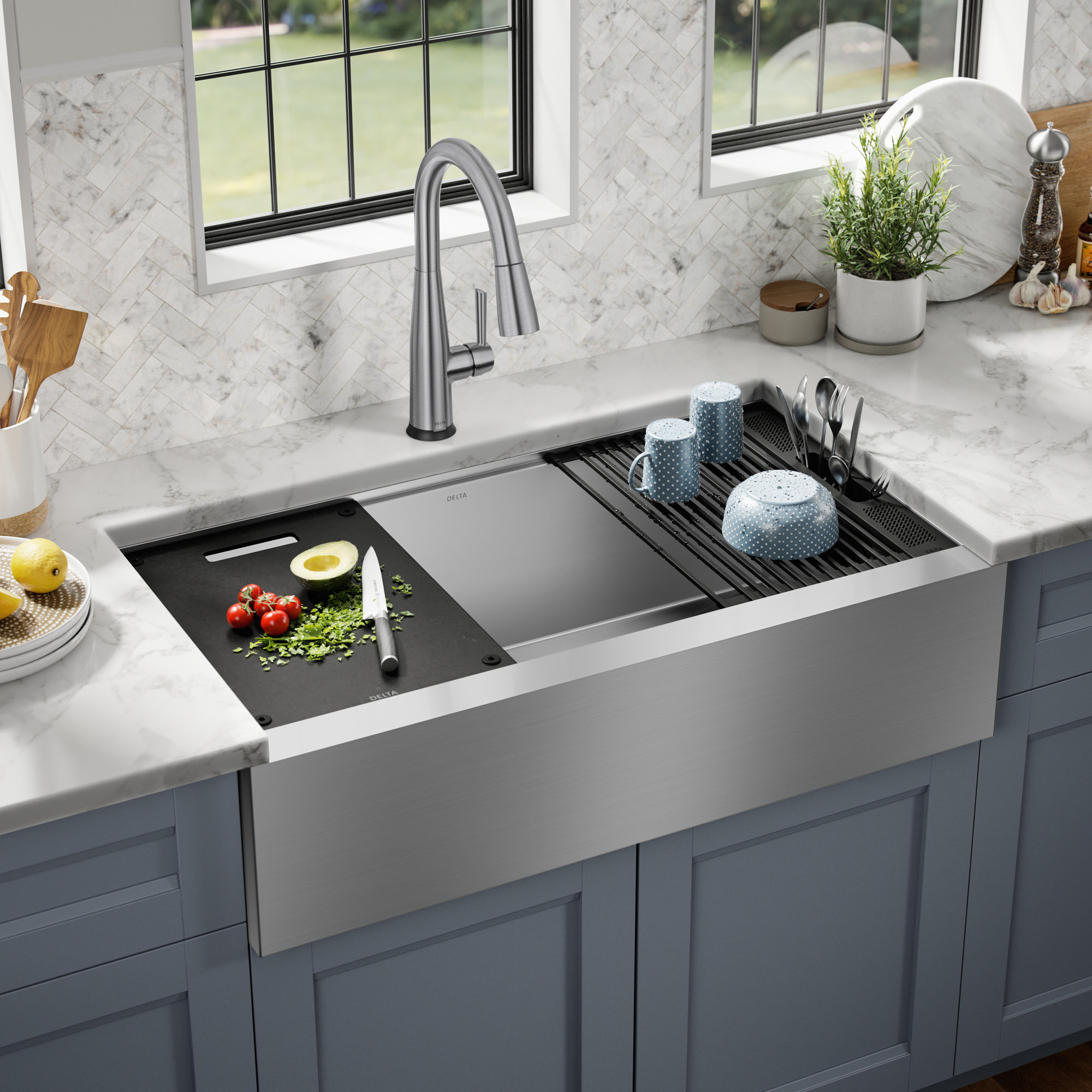How to get rid of kitchen sink smell? The kitchen sink is an essential part of any household, but a lingering and unpleasant smell can disrupt the overall cleanliness and freshness of the space. Kitchen sink odors can arise from various sources, including food debris, grease buildup, and bacterial growth. It is crucial to address these issues promptly to eliminate the odor and create a pleasant environment in your kitchen. In this article, we will explore effective methods to get rid of kitchen sink smell, from routine cleaning practices to natural remedies. Let’s dive into the world of kitchen hygiene and discover how to eliminate unpleasant odors from your sink area.

Regular Cleaning Practices:
To combat kitchen sink smells, establish a routine cleaning regimen for your sink area. Regular cleaning can help prevent the buildup of organic matter that causes odors. Here are some recommended cleaning practices:
- Daily Wiping: Use a clean cloth or sponge to wipe down the surface of the sink after each use. This removes any food particles or debris that may have accumulated.
- Baking Soda and Vinegar: Sprinkle baking soda liberally over the kitchen sink, followed by pouring vinegar over it. Allow the mixture to fizz and bubble for a few minutes before scrubbing the sink thoroughly with a sponge or brush. The combination of baking soda and vinegar helps break down grease and eliminates odors.
- Hot Water and Dish Soap: Run hot water and add a few drops of dish soap to create a soapy solution. Scrub the sink with a sponge or brush to remove any grease or residue. Rinse thoroughly with hot water.
Clearing Drain Clogs:
Kitchen sink smells can be caused by food particles trapped in the drain. Clearing any clogs or debris from the drain can help eliminate odors. Follow these steps:
- Remove and Clean the P-Trap: Place a bucket or towel underneath the P-trap (the curved pipe underneath the sink) to catch any water or debris. Loosen the slip nut connectors on each end of the P-trap and remove it. Clean out any food particles or debris before reassembling the trap.
- Flushing with Boiling Water: Boil a kettle of water and slowly pour it down the drain. The hot water helps dislodge and flush away any remaining debris that may be causing odor.
- Use a Plunger: If the drain remains clogged, use a plunger to create pressure and dislodge the blockage. Start by filling the sink partially with warm water, and then place the plunger over the drain. Plunge vigorously several times until the clog is cleared.

Natural Remedies:
If you prefer natural remedies or want to avoid using harsh chemicals, several kitchen staples can effectively tackle kitchen sink odors. Here are some natural remedies to consider:
- Lemon and Baking Soda: Cut a lemon in half and sprinkle baking soda over the exposed flesh. Use the lemon halves to scrub the sink and drain, squeezing them to release the lemon juice. The natural acids in the lemon help eliminate odors, while baking soda neutralizes them.
- Essential Oils: Mix a few drops of an essential oil such as lemon, lavender, or tea tree with water in a spray bottle. Spray this mixture around the sink and drain area to freshen the air and mask any unpleasant odors.
- Vinegar and Citrus Peels: Save citrus peels, such as lemon or orange, and place them in a jar filled with white vinegar. Allow the peels to steep in the vinegar for a few weeks. After this time, strain the mixture and use it as a natural cleaning solution for your sink and drain.
Prevention Tips:
Preventing kitchen sink odors is as important as eliminating them. Incorporate these preventive measures into your routine to ensure a fresh-smelling sink area:
- Avoid Pouring Grease: Dispose of grease and cooking oils in a separate container, rather than pouring them down the drain. Grease can solidify and accumulate in the pipes, leading to blockages and odor problems.
- Use a Sink Strainer: Place a install a kitchen sink strainer over the drain to catch food particles and prevent them from entering the pipes. Empty the strainer regularly and clean it to prevent debris buildup.
- Run Cold Water While Using the Disposal: When using the garbage disposal, run cold water continuously to help flush away debris and prevent food from sticking to the inside of the disposal unit.
How to install a kitchen sink
Installing a kitchen sink is a common and relatively straightforward home improvement project. Whether you are replacing an old sink or installing a new one, understanding the step-by-step process is essential for a successful installation. With the proper tools and techniques, you can confidently install a kitchen sink and enjoy the added functionality and aesthetic appeal it brings to your kitchen.

Prepare the Area:
Before you begin installing a new kitchen sink, prepare the area by following these steps:
- Turn off the water supply: Locate the shut-off valves underneath the sink and turn them clockwise until they are fully closed. This prevents water flow during the installation process.
- Remove the old sink (if applicable): If you are replacing an existing sink, disconnect the plumbing connections and remove the sink from the countertop. Follow any manufacturer instructions or consult a professional if necessary.
- Clean the countertop: Thoroughly clean the area where the new sink will be installed. Ensure the surface is free of any debris, old caulk, or adhesive residue.
Assemble the Necessary Tools and Materials:
Gather the following tools and materials before beginning the installation process:
- New kitchen sink: Choose a sink that fits both your personal style and the dimensions of your countertop.
- Faucet: Select a faucet that matches the sink and meets your needs in terms of functionality and design.
- Plumbers putty or silicone caulk: This will be used to create a watertight seal around the sink edges.
- Adjustable wrench and channel-lock pliers: These tools will be necessary for connecting and tightening plumbing connections.
- Screwdriver: Depending on the type of faucet and sink, you may need a screwdriver for installation.

Install the Kitchen Sink:
Follow these steps to install the kitchen sink properly:
- Install the faucet: Install the faucet according to the manufacturer’s instructions. This usually involves placing the faucet through the appropriate holes in the sink and securing it from underneath. Ensure the faucet is properly aligned and tighten any necessary bolts or connections.
- Apply plumbers putty or silicone caulk: Roll a small amount of plumbers putty or apply silicone caulk to the underside of the sink rim. This will create a watertight seal between the sink and countertop.
- Position the sink: Carefully lower the sink into the opening in the countertop. Ensure it is properly aligned and centered. Press down to allow the putty or caulk to adhere to the countertop, creating a seal.
Conclusion:
A fresh-smelling kitchen sink is essential for maintaining a clean and pleasant kitchen environment. Regular cleaning practices, including wiping down the corner kitchen sink, using baking soda and vinegar, and disinfecting with bleach, can help eliminate odors. Clearing drain clogs and using natural remedies like lemon and baking soda or essential oils can further tackle unpleasant smells. Additionally, taking preventive measures such as avoiding pouring grease down the drain, using a sink strainer, and running cold water while using the garbage disposal can help prevent future odors.

